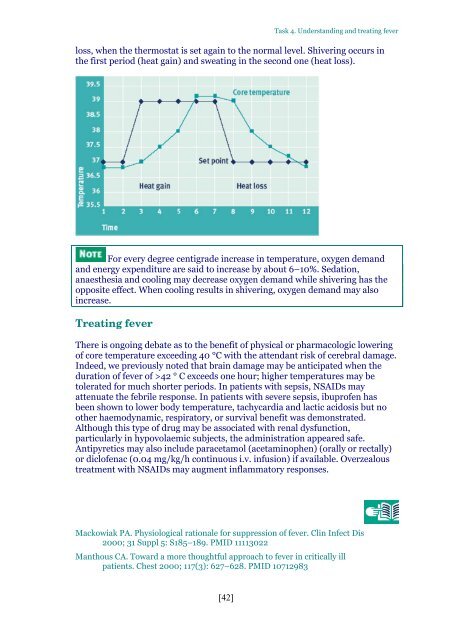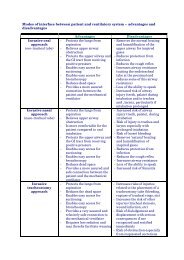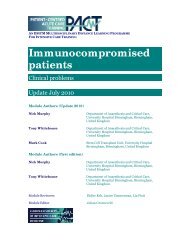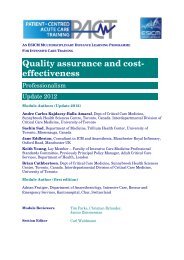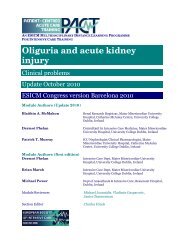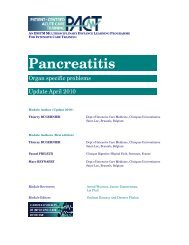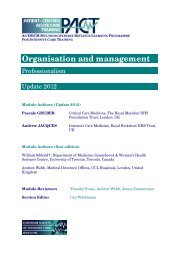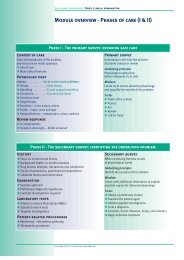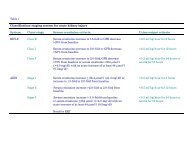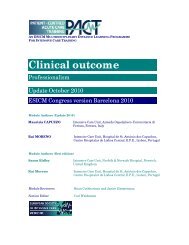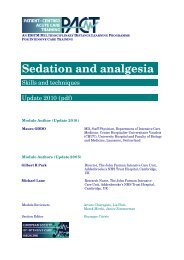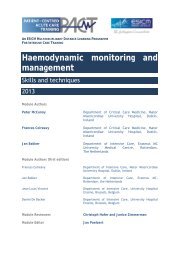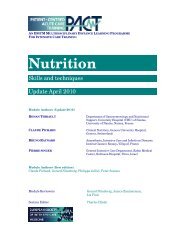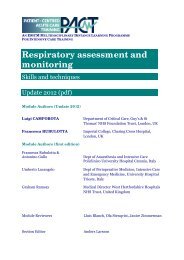Pyrexia - PACT - ESICM
Pyrexia - PACT - ESICM
Pyrexia - PACT - ESICM
You also want an ePaper? Increase the reach of your titles
YUMPU automatically turns print PDFs into web optimized ePapers that Google loves.
Task 4. Understanding and treating fever<br />
loss, when the thermostat is set again to the normal level. Shivering occurs in<br />
the first period (heat gain) and sweating in the second one (heat loss).<br />
For every degree centigrade increase in temperature, oxygen demand<br />
and energy expenditure are said to increase by about 6–10%. Sedation,<br />
anaesthesia and cooling may decrease oxygen demand while shivering has the<br />
opposite effect. When cooling results in shivering, oxygen demand may also<br />
increase.<br />
Treating fever<br />
There is ongoing debate as to the benefit of physical or pharmacologic lowering<br />
of core temperature exceeding 40 °C with the attendant risk of cerebral damage.<br />
Indeed, we previously noted that brain damage may be anticipated when the<br />
duration of fever of >42 ° C exceeds one hour; higher temperatures may be<br />
tolerated for much shorter periods. In patients with sepsis, NSAIDs may<br />
attenuate the febrile response. In patients with severe sepsis, ibuprofen has<br />
been shown to lower body temperature, tachycardia and lactic acidosis but no<br />
other haemodynamic, respiratory, or survival benefit was demonstrated.<br />
Although this type of drug may be associated with renal dysfunction,<br />
particularly in hypovolaemic subjects, the administration appeared safe.<br />
Antipyretics may also include paracetamol (acetaminophen) (orally or rectally)<br />
or diclofenac (0.04 mg/kg/h continuous i.v. infusion) if available. Overzealous<br />
treatment with NSAIDs may augment inflammatory responses.<br />
Mackowiak PA. Physiological rationale for suppression of fever. Clin Infect Dis<br />
2000; 31 Suppl 5: S185–189. PMID 11113022<br />
Manthous CA. Toward a more thoughtful approach to fever in critically ill<br />
patients. Chest 2000; 117(3): 627–628. PMID 10712983<br />
[42]


